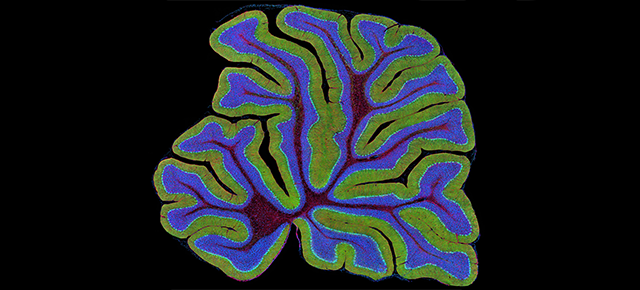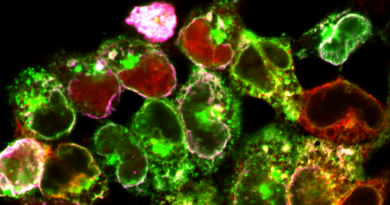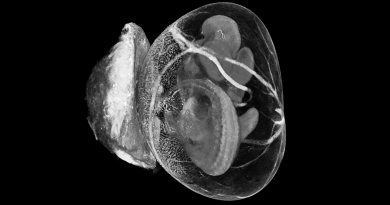Image (movies) of the Month: Amoebae’s feeding frenzy
From the Labs presents the movies of the month, featuring the soil-dwelling single-celled amoeba Dictyostelium discoideum interacting with Gram-negative bacteria Klebsiella pneumoniae, courtesy of the lab of Dr. Adam Kuspa.
Amoebae living in soil are constantly exposed to vast numbers of heterogeneous groups of bacteria. One of the amoebae’s intriguing responses to bacterial diversity is the production of specific compounds that enable them to recognize specific bacterial species to survive.
In the presence of K. pneumoniae (colored in green), D. discoideum (in red) produces CadA, a lectin that binds to these bacteria and stimulates the amoeba’s appetite for them, as you can see in Video 1 below.
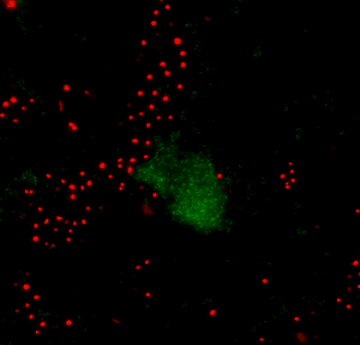
Video 1: In the presence of CadA, D. discoideum (red) avidly consumes K. pneumoniae (green). (Science Advances, July 2019)
But when the amoebae were genetically manipulated to lack CadA, they just plunged through bacterial clumps without eating the bacteria (Video 2).
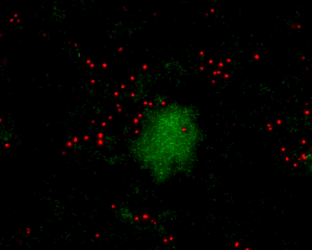
Video 2: In the absence of CadA, D. discoideum ignores K. pneumoniae. (Science Advances, July 2019)
Find all the details of this study in the journal Science Advances and read Dr. Kuspa’s interview in From the Labs.

Dr. Adam Kuspa, professor of biochemistry and molecular biology and senior vice president and dean of research at Baylor.

